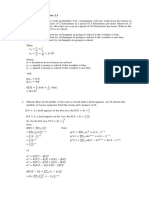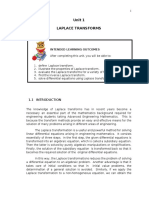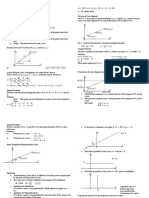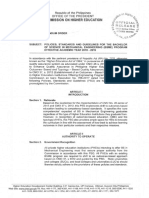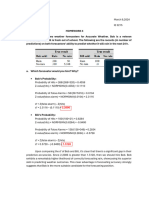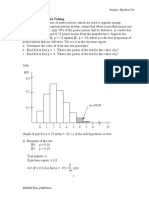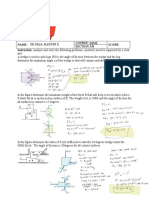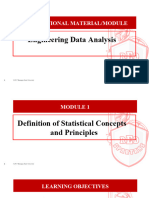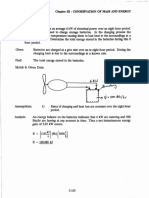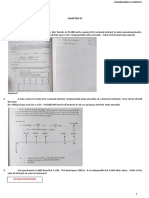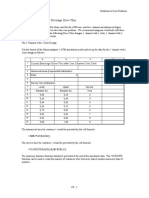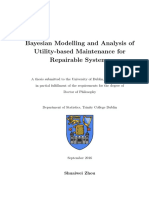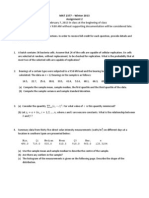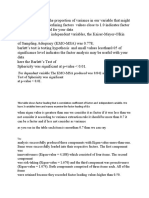0% found this document useful (0 votes)
439 views5 pagesDiscrete Probability Distribution
- A discrete random variable can take on countable values with associated probabilities, while a continuous random variable can take on uncountable values defined by a probability density function.
- The probability mass function of a discrete random variable and the probability density function of a continuous random variable must both satisfy three properties: being non-negative, having the total probability integrate to 1, and having the probability of an event equal the function value.
- An example calculates the probability distribution of the number of defective motherboards selected from a package when given the total number of defective and non-defective motherboards.
Uploaded by
Kent G NacaytunaCopyright
© © All Rights Reserved
We take content rights seriously. If you suspect this is your content, claim it here.
Available Formats
Download as DOCX, PDF, TXT or read online on Scribd
0% found this document useful (0 votes)
439 views5 pagesDiscrete Probability Distribution
- A discrete random variable can take on countable values with associated probabilities, while a continuous random variable can take on uncountable values defined by a probability density function.
- The probability mass function of a discrete random variable and the probability density function of a continuous random variable must both satisfy three properties: being non-negative, having the total probability integrate to 1, and having the probability of an event equal the function value.
- An example calculates the probability distribution of the number of defective motherboards selected from a package when given the total number of defective and non-defective motherboards.
Uploaded by
Kent G NacaytunaCopyright
© © All Rights Reserved
We take content rights seriously. If you suspect this is your content, claim it here.
Available Formats
Download as DOCX, PDF, TXT or read online on Scribd
/ 5





